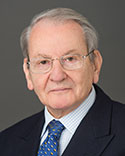In your article “Will Commission Tailor Its Chief Judge Search to Senate’s Democratic Majority,” you describe acting Chief Judge Anthony Cannataro as “part of a former so-called conservative bloc of four judges on the Court of Appeals” and quote Albany Law School professor Vincent Bonventre saying, “I can’t imagine the Judiciary Committee and the full Senate would approve [Cannataro's nomination]” and lauding Associate Judge Rowan Wilson as “vigorous and supportive of the rights of the accused as you are ever going to get on the high court,” whose nomination “would just fly by the Judiciary Committee and full Senate.”
This is grossly unfair to Cannataro, under whose leadership since becoming acting chief judge on Sept. 1, 2022, criminal defendants-appellants have rarely, if ever, found a more receptive court for their pleas.
Comparing the results under his leadership with those during the first nine months of 2022 (or prior years) is like night and day in favor of the defendants. The following statistics are taken from my review of the court’s 2022-23 Decision Lists.
During the first seven months of 2022, the court decided 23 criminal appeals, resulting in affirmances in 17 (74%) and reversals in six (26%). In 12 of those cases (52%), the only writing was as brief 500.11 Memorandum; three others (1.3%) were also decided by a memorandum. There were dissents in 10 appeals (43.5%). No decisions were released in August or September 2022.
Since October, the court decided 13 criminal appeals, resulting in four affirmances (30.7%) and nine reversals (69.3%). Only two were decided by a 500.11 Memorandum (15.4%) and one other (0.08%) by a memorandum, instead of a much longer signed opinion. Only two appeals had dissents (15.3%).
Looking beyond criminal appeals, we see Cannataro has brought about a welcome consensus among the judges that had been lacking, with many more signed majority opinions, 21 in 34 appeals (61.7%), instead of memoranda, and only eight dissents (23.5%).
These are the undeniable facts the governor and Senate should consider when nominating and confirming another chief judge for our Court of Appeals, not the lobbying of politicians or other interested parties.
Reprinted with permission from New York Law Journal, © ALM Media Properties LLC. All rights reserved.








